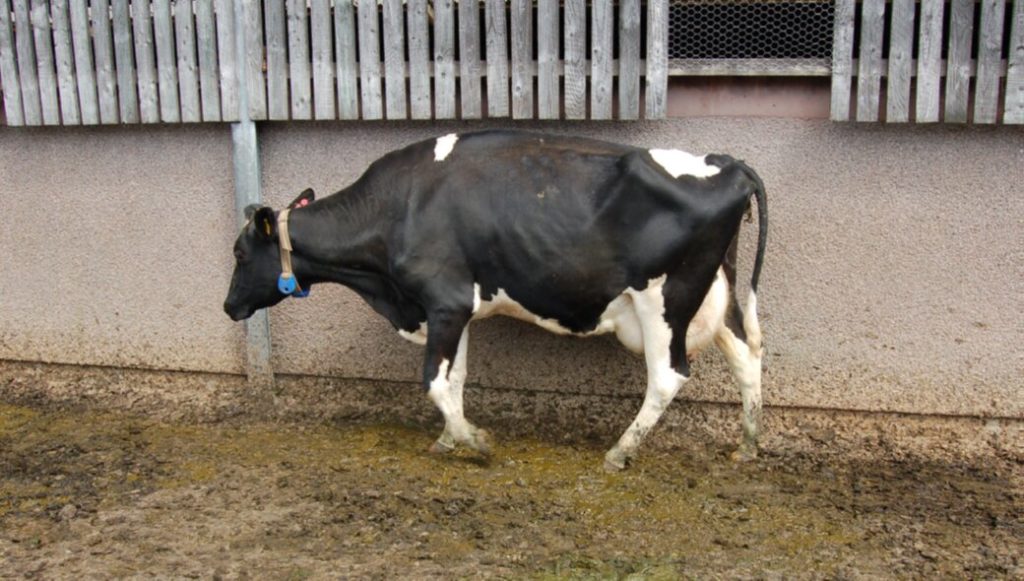Preventing Lameness Within Your Dairy Herd
26 October 2022Lameness is one of the costliest diseases within the dairy cow herd, with the average cost of each lameness case being £180 but can vary from £75 up to £500. This financial loss includes the treatment of the case, milk yield losses, reduced fertility and early culling leading to shortened lifetime productivity. Lameness is a painful disease that affects the cow’s walking movement and impacts how she behaves across the day with longer lying times and reduced feeding bouts which influences milk yield and fertility.
The majority of lameness cases occur in the foot of the cow, over 80%, and generally it is a hind foot that is affected. Environment, cow management and nutrition are all factors that can influence the chances of whether a cow will become lame. During the summer months when cows are walking between grazing and milking, the quality of the track is important to consider for reducing the risk of lameness. An uneven track with sharp stones can cause damage to the hoof whilst a wet and muddy track or gateway can cause the claw horn and skin to soften.
When the cows are housed, there are a number of factors to consider including hygiene, cubicle space, feed space, collecting yard space and handling of cows. Passageways and collecting yards should be cleaned regularly to reduce the time cows spend standing in slurry which causes the claw horn and skin to soften, allowing digital dermatitis to develop quicker within the hoof. Poor hygiene in these areas allows digital dermatitis to spread more quickly between cows. Comfortable cubicles are important for encouraging cows to spend a considerable proportion of their day lying down, ideally between 12 and 14 hours per day. During the lying period, growth is stimulated in the hoof which improves the strength and durability of the cow’s feet. If cubicles are uncomfortable or crowded, cows are less likely to lie down which increases their standing time resulting in stress on the hooves.
Reduced feed space can cause cows to crowd in one area which can result in pushing and barging past each other, leading to hoof damage including trauma and white line disease. Cows with low body condition scores are a higher risk group for becoming lame due to the reduced thickness of the fat pad located in their hooves. This fat pad is important for providing protection and cushioning when she is walking.
If a cow has suffered with lameness previously then she is more likely to become lame again in the future, therefore preventing lameness within the herd is key and can be done through preventing hoof damage, improved cow management and having a suitable hoof care management regime for the herd. Hoof damage tends to occur through the environment in which the cows are exposed to, therefore ensuring adequate, clean space is provided can reduce lameness incidences. Cow management can be an important way of reducing lameness by ensuring stress free handling, reduced group changes to avoid fighting with dominant cows and minimising body condition loss post-calving.
A hoof care management regime should aid you in monitoring and treating lameness at the earliest point which will aid in the recovery process. Identifying lame cows early can be done through regular mobility scoring and these scores should be used to pick out cows that require attention by the hoof trimmer. Keeping regular records of the lameness levels within the herd (on an individual cow basis) will allow the opportunity to determine if lameness cases have improved. If the herd is affected by digital dermatitis, a regular foot bathing regime is key for reducing the spread of infection between cows.
Reducing the lameness levels within a herd will reduce the financial losses from milk production, fertility and early culling. Focusing time on managing the risk factors will help limit the opportunity for lameness to occur within the dairy herd.
cara.campbell@sac.co.uk; 01586 552502
Sign up to the FAS newsletter
Receive updates on news, events and publications from Scotland’s Farm Advisory Service

